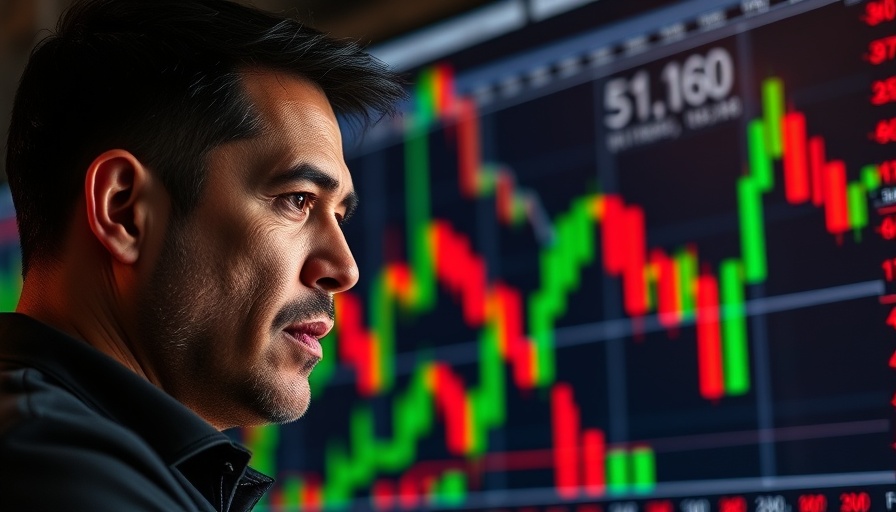
Understanding Bitcoin's Current Market Behavior
In the unpredictable world of cryptocurrencies, recent fluctuations in Bitcoin's price have left many investors scratching their heads. Raoul Pal, a global macro investor, suggests the reason behind Bitcoin's lackluster performance may not be as mystical as it appears. As he points out, pricing trends tend to mirror natural cycles within the economy, particularly the ISM business cycle, which tracks economic expansion and contraction.
In 'Raoul Pal: The ACTUAL Reason Bitcoin & Crypto Are Crashing!', the discussion dives into the mechanics of Bitcoin's market behavior, exploring key insights that sparked deeper analysis on our end.
The Implications of the Extended Business Cycle
Pal notes that we currently exist in a unique market environment characterized by an elongated business cycle—now extended from four years to five. This means that while Bitcoin often trades within a predictable range, the timing of its anticipated peaks might also shift. According to Pal, we're likely looking at a major Bitcoin price peak around Q2 of 2026. The implications of this extended cycle can significantly impact any investor's strategy. Understanding these trends helps one make informed decisions whether they wish to invest, trade, or even huddle their assets.
Buying Opportunities: Timing is Everything
With the ISM currently indicating economic contraction below the critical threshold of 50, historical data shows that buying during these dips can yield substantial future returns. In earlier cycles, such buying opportunities paved the way for impressive price rebounds. Many seasoned traders often recommend a strategy of accumulating Bitcoin and other cryptocurrencies when market sentiment appears most bearish. This 'buying the dip' method could be an effective strategy for both novice and experienced investors alike.
The Role of Altcoins in Today's Market
While the Bitcoin narrative is captivating, the altcoin sector is rife with potential as well. The podcast discussion also highlighted important altcoins like BitTensor, indicating a shift in focus toward promising projects that continue evolving despite market downtrends. For example, Jason’s investment in BitTensor—a platform aiding artificial intelligence functionalities—signifies a trend to monitor. If the AI sector continues its trajectory, crypto enthusiasts may want to align their portfolios accordingly.
Insights into Future Trends and Predictions
As we analyze Raoul Pal’s insights further, it’s essential to identify what current trends could mean for the future of investments in crypto. With companies developing robust functionalities in niche altcoin markets and innovations in trading protocols, the convergence of blockchain technology with AI further enhances value propositions in digital assets. Investors must remain vigilant, staying updated on technologies and projects that can energize the crypto realm.
Conclusion: Shaping Your Crypto Strategy
In a networked world where economic indicators directly influence asset prices, understanding the broader market landscape will benefit all levels of investors. If you're keenly interested in strategies for navigating the rapidly changing crypto market, consider not only Bitcoin but also the broader ecosystem of promising altcoins ready for takeoff. Learn from historical trends, like those discussed in Raoul Pal's analyses—they could lead you to a more informed investing strategy that supports your goals. Join our community of crypto enthusiasts and refine your understanding of dynamic trading.
 Add Row
Add Row  Add
Add 




Write A Comment